Whether you want to make wood, tile or concrete floors more comfortable, or just add color and style to a room, an area rug is a great choice. When choosing a rug, there’s more to consider than just color and pattern, so this guide will help you determine which size and shape will work best with your room layout.
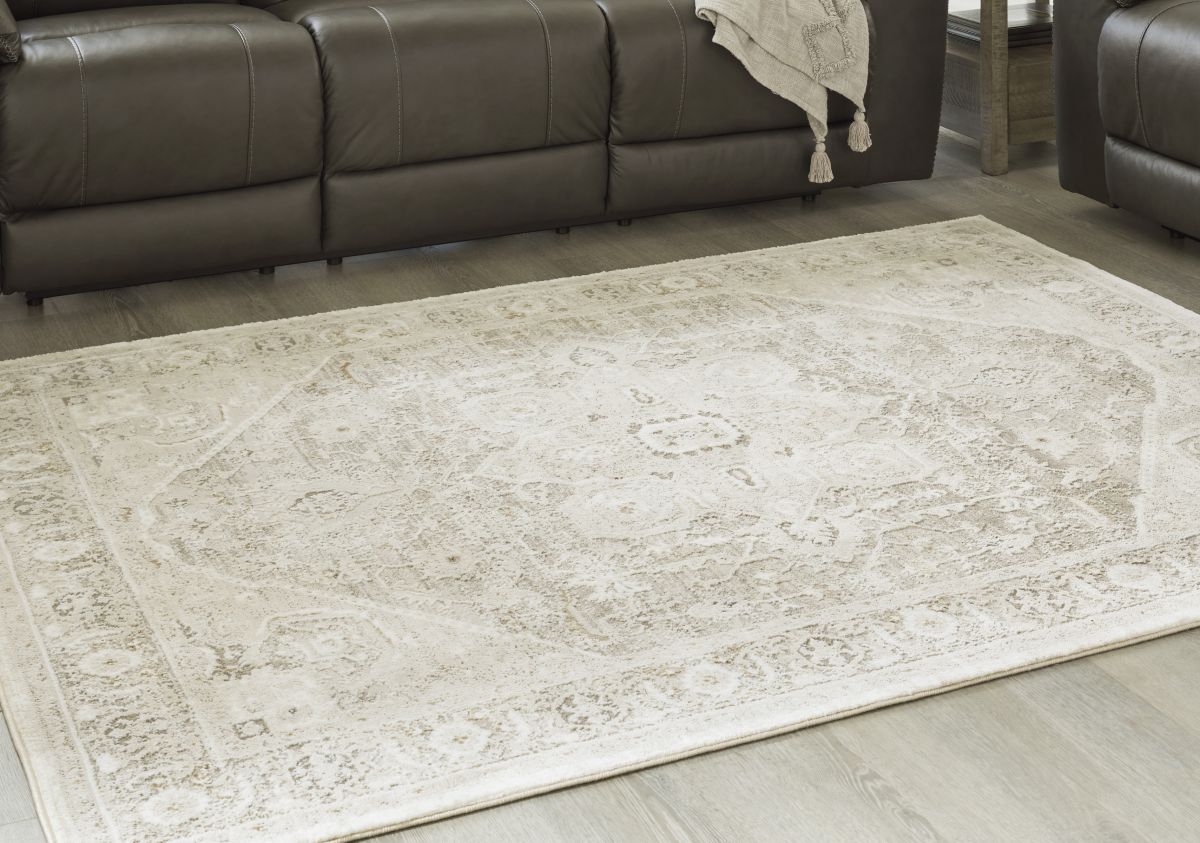 (Pictured: Gatwell Rug)
(Pictured: Gatwell Rug)
Standard Sizes for Area Rugs
When you’re shopping for the perfect area rug for your space, you’ll have a few common sizes to choose from. Square and round rugs are typically 4’, 6’, or 8’, while rectangular rugs are typically 2’x3’, 4’x6’, 5’x8’, 6’x9’, 8’x10’, 9’x12’, and 12’x14’, but those sizes can vary by a foot or two.
Recommended Rug Sizes and Shapes
As a general rule, an area rug that’s covering the majority of the floor should be between six inches and two feet from the walls of the room. Rectangular and square rugs work well in most situations, but if you have a round dining table or curved sofa, a round rug will be a nice complement to the shape.
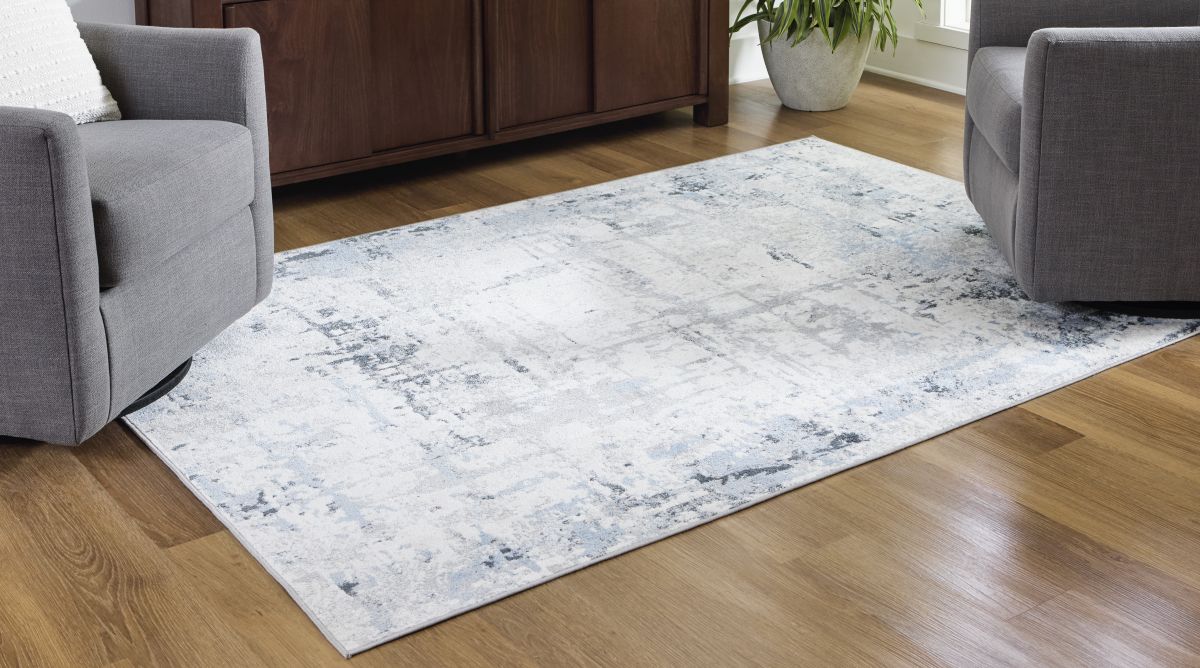 (Pictured: Emertonly Rug)
(Pictured: Emertonly Rug)
Using Area Rugs in the Living Room
If you have hard-surface flooring in your living or family room, you may want an area rug for noise reduction and adding warmth and comfort under bare feet. Even if the floor is carpeted, a well-chosen area rug can help define a conversation area or add style and personality to a room. Depending on the size of the room and the layout of your furniture, you’ve got several options:
 (Pictured: Soletren Chair)
(Pictured: Soletren Chair)
Furniture All the Way on the Rug:
This is a classic option that works whether your furniture is floating in the room or placed against a wall. It’s also a great way to pull a room full of differently-styled pieces together. In this layout, your area rug will need to be big enough to fit all the legs of each piece of furniture on it without being cramped. Not sure how far apart to place your furniture? Check out our furniture spacing guide. An easy way to find the right rug size for this situation is to use masking tape to make a border around the grouping, then measure the box you’ve created.
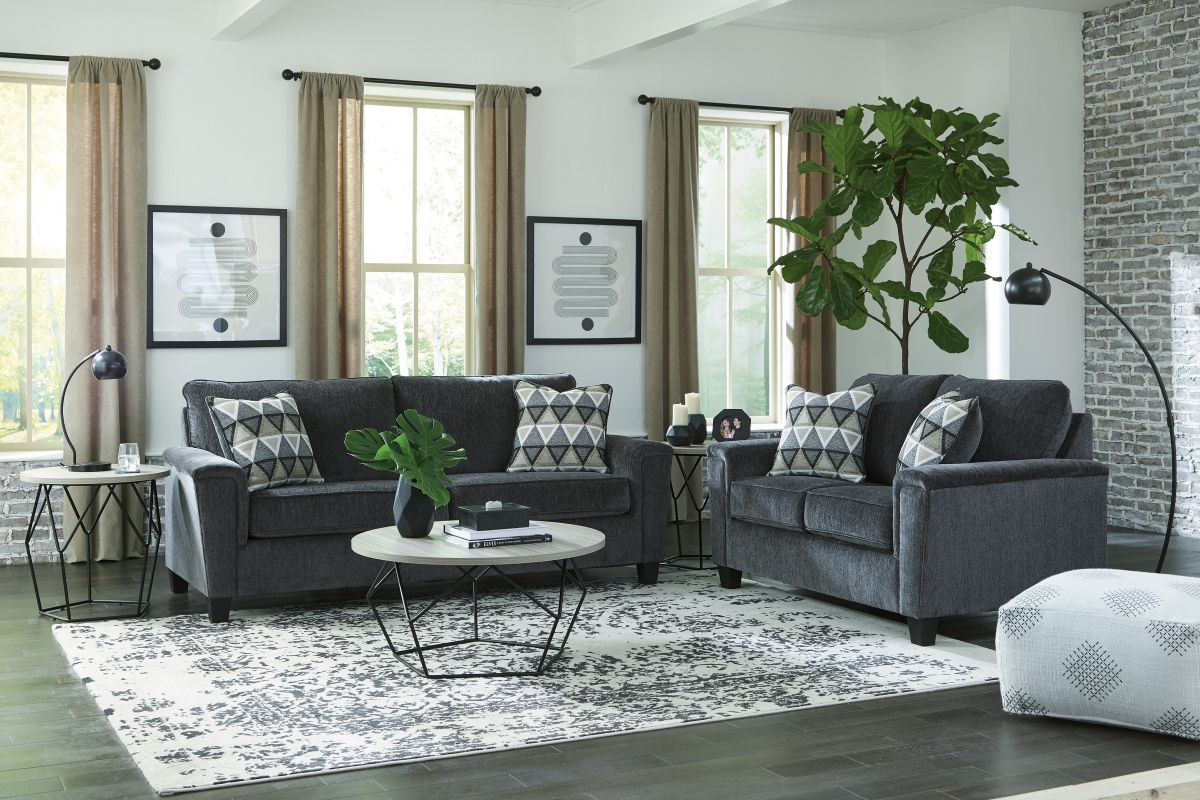 (Pictured: Abinger Living Room Group)
(Pictured: Abinger Living Room Group)
Furniture Halfway on the Rug:
Placing only the front legs of your major furniture pieces on an area rug also unifies a layout, and it creates a focal point by directing the eye to the center of the grouping. Each piece doesn’t have to be lined up around the rug, however. Try different combinations, like putting the couch completely on the rug and the side tables only halfway on. Put an old bed sheet on the floor to help find the look you want and make measuring easy.
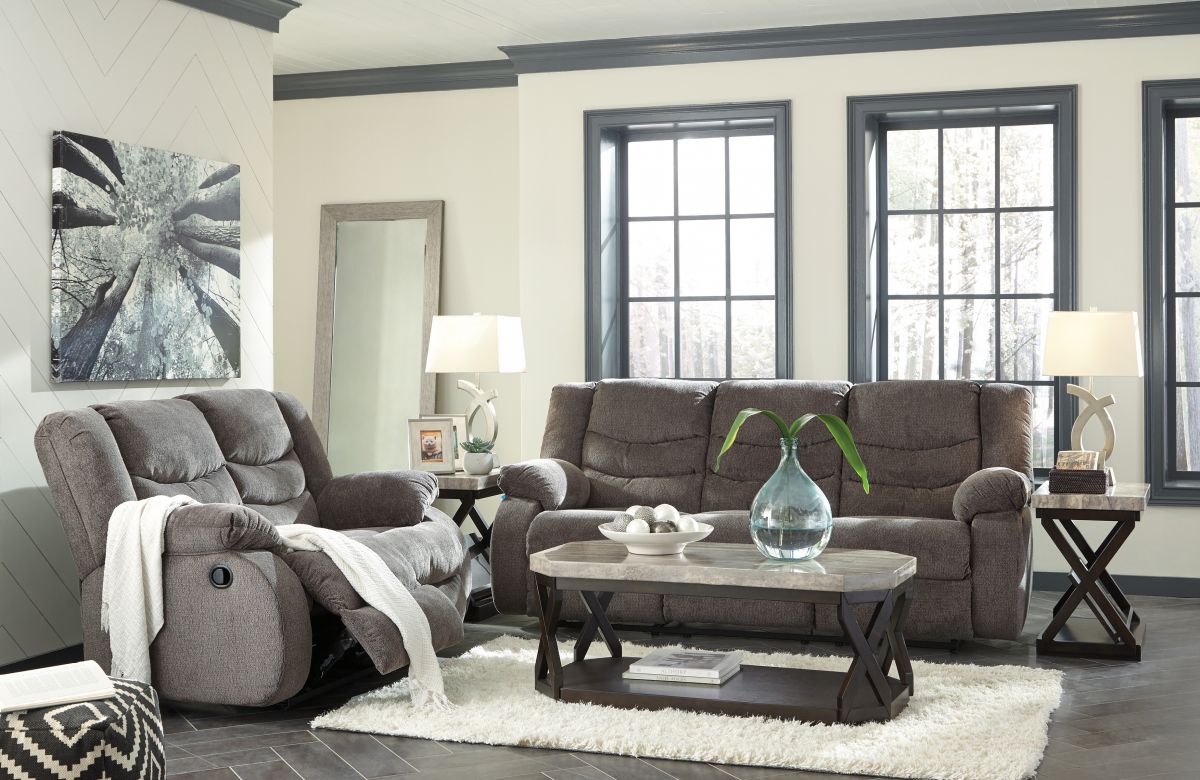 (Pictured: Tulen Living Room Group)
(Pictured: Tulen Living Room Group)
Furniture Completely off the Rug:
In a small room, placing the coffee table on the area rug and all the other furniture around the edges can help anchor the space. In this case, your area rug should be at least as long as your couch, if not a little longer. Even though the furniture will be off the rug, keep them close to its edges so the grouping feels connected. To find the rug size and furniture layout you want, tape sheets of paper together and use them as a template.
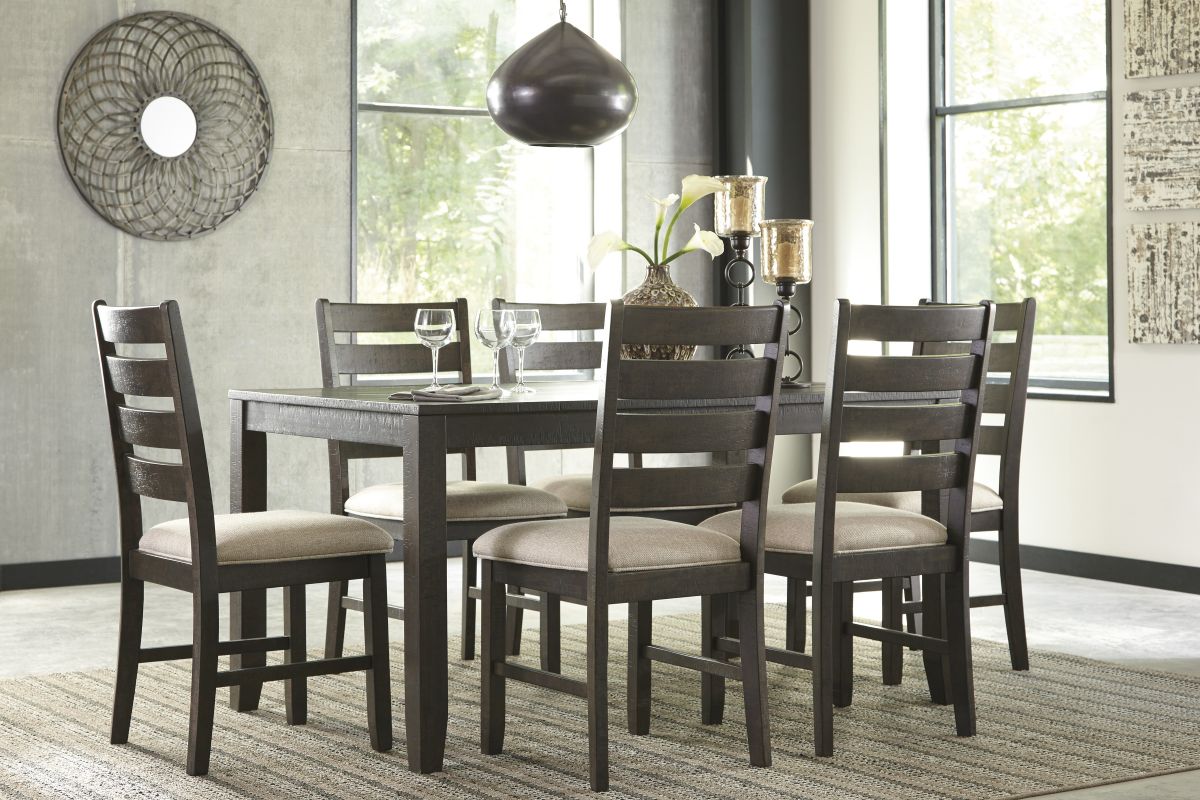 (Pictured: Rokane Dining Table & 6 Chairs)
(Pictured: Rokane Dining Table & 6 Chairs)
Using Area Rugs in the Dining Room
Whether you have an eat-in kitchen or a formal dining room, an area rug can add personality and define the space. In the dining area, the table and all chairs should fit completely on the rug, even when your guests pull their chairs out. Choose a rug that matches the shape of your dining set, whether it’s round, square or rectangle, and a size that’s at least 2 feet bigger on each side. You may need a larger rug if there’s a pattern in the middle that would be covered by the table.
Using Area Rugs in Bedrooms
Create a cozy look for your bedroom and a warm landing spot for your feet with a large area rug. Even if your room is small, there are a couple of different options that can work.
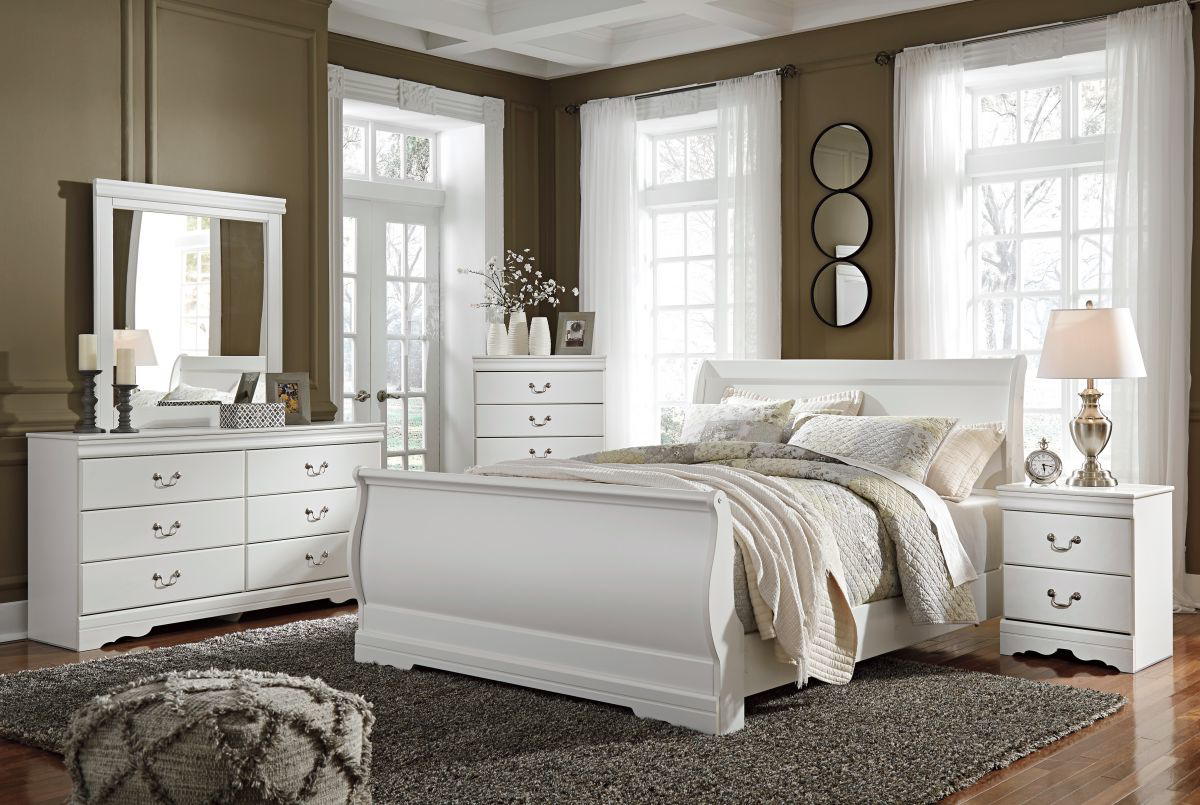 (Pictured: Anarasia Queen Bedroom Group)
(Pictured: Anarasia Queen Bedroom Group)
Rug Under the Bed and Nightstands:
In this case, the rug should be long enough to extend from the wall at the head of the bed to at least 12-28 inches past the foot of the bed, and wide enough to extend past the nightstands, or two to three feet on both sides of the bed.
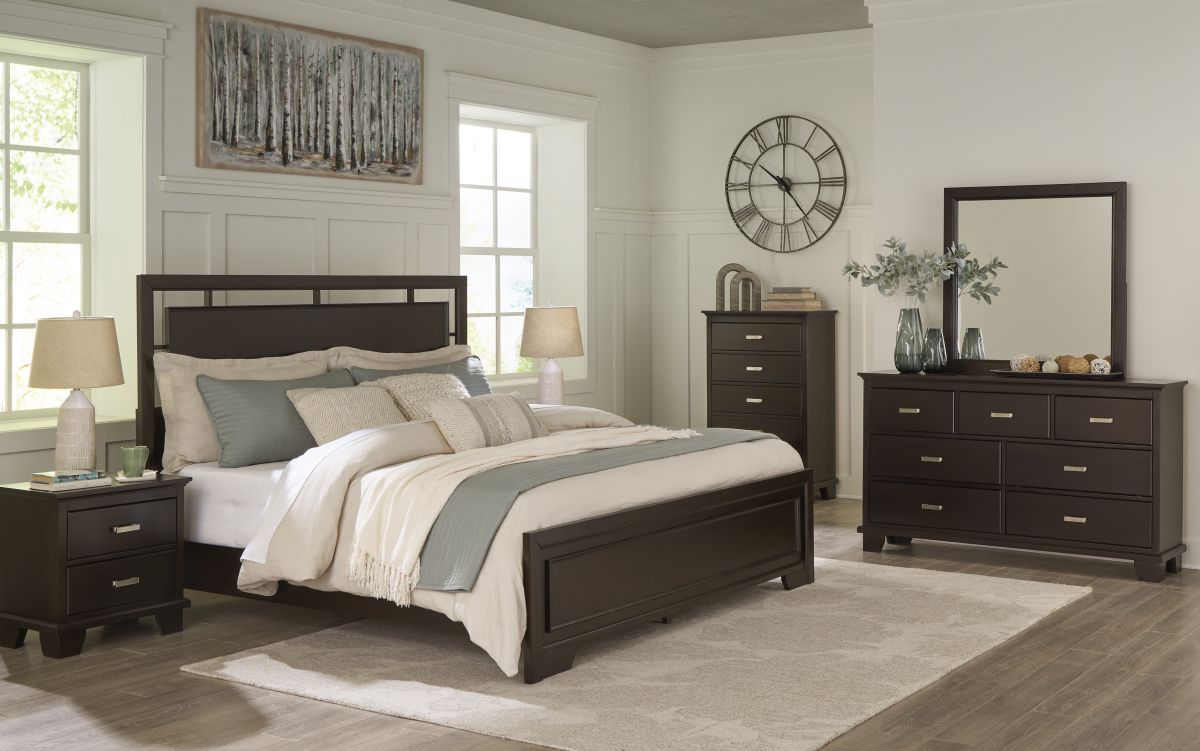 (Pictured: Covetown Queen Bedroom Group)
(Pictured: Covetown Queen Bedroom Group)
Rug Under Part of the Bed:
You can get by with a smaller area rug by placing it in front of the nightstands instead of underneath them. Again, choose a size that’s two or three feet wider than your bed on both sides, and long enough to extend about 18 inches beyond the foot of the bed.
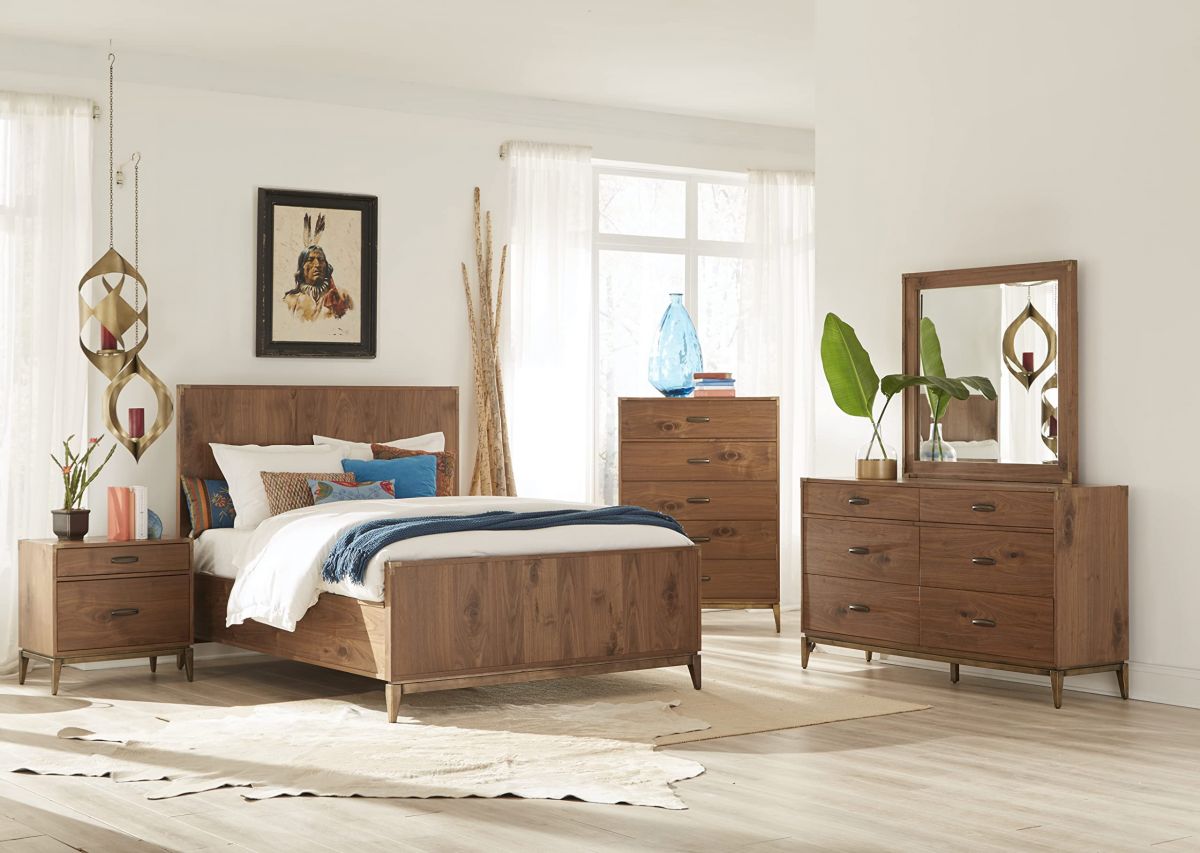 (Pictured: Adler Queen Bedroom Group)
(Pictured: Adler Queen Bedroom Group)
Rug Beside the Bed:
Small rugs or runners can be used beside the bed as a more affordable way to give your feet a warm, soft spot to land in the mornings.
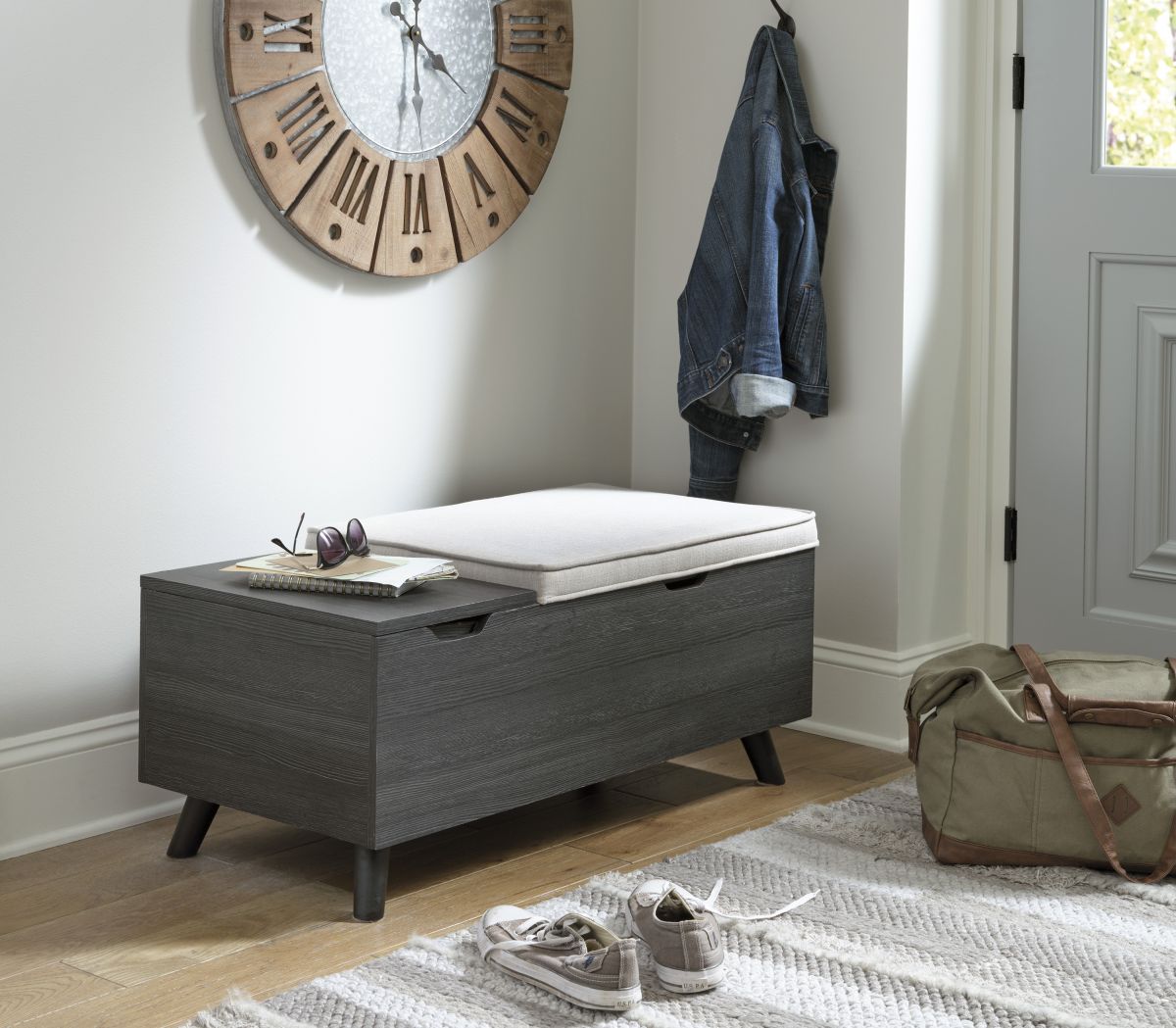 (Pictured: Yarlow Bench)
(Pictured: Yarlow Bench)
Using Rugs or Runners in Entryways and Hallways
Greeting your guests with a bold colored or patterned rug can create a welcoming feel for your home, and a runner creates a visual guide through a hallway. In the entryway, try using a round area rug. When selecting a runner, pick a size that’s narrower than the hall, and as long as possible while still leaving space at either end. If there’s furniture in the hallway, it should stay off the rug, so choose a narrower size that will fill the walkway.
At Wichita Furniture & Mattress, we carry a variety of stylish area rugs to suit any style. Browse our area rug selection online here, or shop in person at our store.






